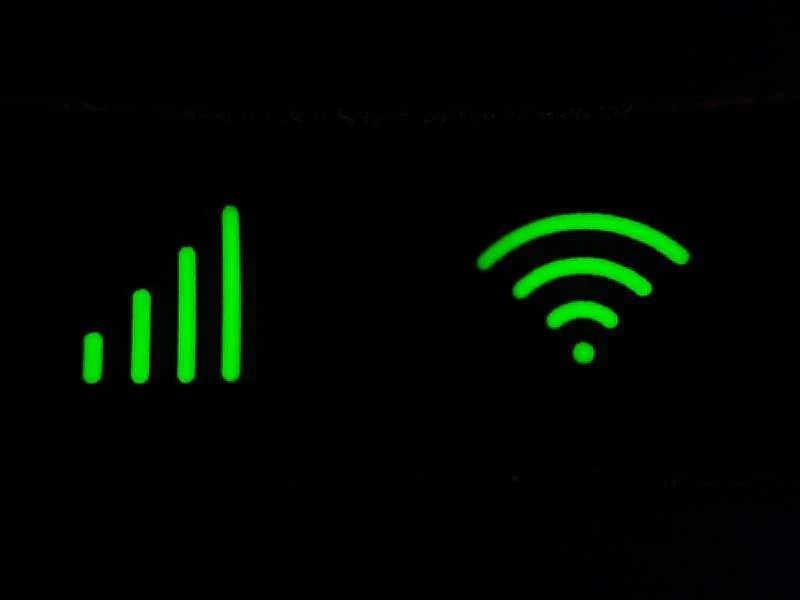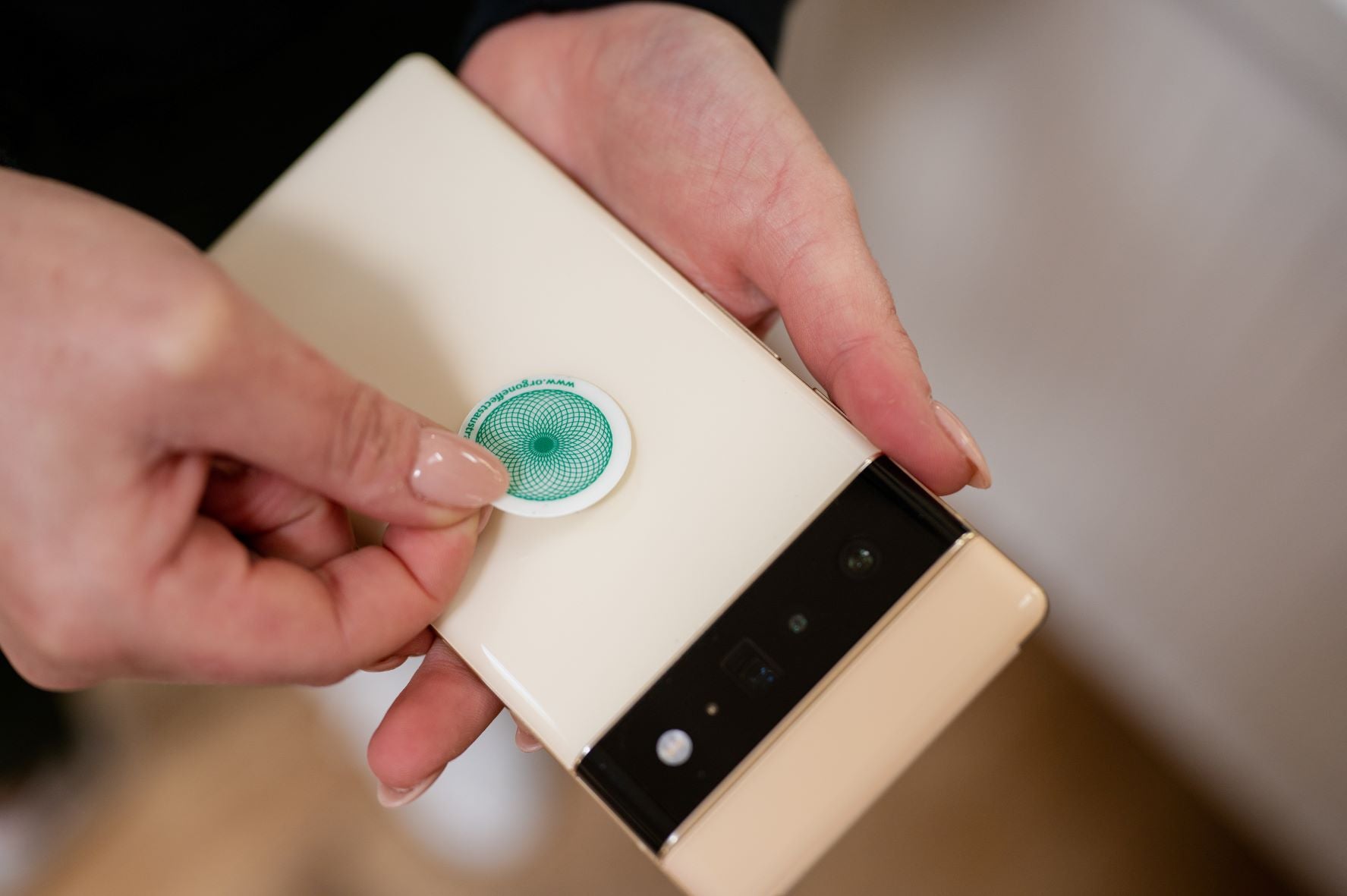
When trying to protect yourself from your neighbor’s WiFi network or your smart meter, blocking the interior wall of your home from electromagnetic radiation is sometimes a necessary step. One simple way to do this is to coat all or part of the wall with EMF shielding paint. Although it typically requires at least two applications, EMF shielding paint is generally very effective at preventing EMF frequencies from entering your home.
Does EMF Shielding Paint Work?
EMF shielding paint typically acts as a protective screen for your wall and prevents a given frequency range from entering or leaving. If you only paint one wall, only that wall will repel the EMF signals. If you painted an entire space, that entire space would theoretically repel a signal. You could create an entire dead space in your home that no signal would enter or exit. EMF shielding paint blocks certain frequencies. The exact frequency range varies depending on the manufacturer. However, you should look for colors that block higher frequencies (in the megahertz and gigahertz range) and lower frequencies (up to 300Hz). This includes all EMF radiation types, from RF to ELF.
It should be noted that EMF shielding paint blocks all frequencies in this range, so you may experience interference with your WiFi signal if it is wireless. If you can’t connect, you may need to move your router to make sure it can still pick up a signal in the room where the paint is applied.
What is EMF Paint?
EMF paint is a conductive paint that protects against low-frequency electrical fields and RF electromagnetic fields. The paint color is black and is applied like normal paint. In most cases, a layer of EMF paint is enough to block EMF. However, applying a second layer offers even better EMF protection. After the EMF paint dries, normal paint of any color can be applied to it.
What Material Can Block EMF?
EMF shielding materials are typically based on the concept of attenuation. It is the principle that the strength or energy of a signal/wave gradually decreases as it passes through different media. Here are some examples of this concept in motion:
- Noise attenuation when passing through a wall
- Light attenuation when passing through a tinted glass
- X-ray weakening when wearing a lead vest in the dentist’s office
There are three primary materials used in EMF radiation attenuation. They are listed below.
Copper
One of the most effective EMF protection materials is copper mesh. It’s very effective at blocking RF and EMF radiation of almost all wavelengths up to 95 percent. Unlike other materials, the thickness of the copper mesh makes no difference in its ability to dampen electromagnetic fields. The only thing to consider is to make sure that the holes in the copper mesh are smaller than the wavelength of the waves that are to be blocked.
To protect yourself from radiation, place the copper mesh between you and the EMF source as the EMF waves travel in a straight line. There are copper mesh films and screens on the market that are designed specifically for windows to prevent EMF rays from entering while allowing natural light in. You often find that copper is used for radiation protection in server rooms, hospitals, and many more. Note that this is a pretty expensive option.
Mylar
Mylar provides excellent electromagnetic shielding when placed between you and the source of radiation. However, it is important to note that the goal of protecting you and your family from the detrimental effects of radiation is not to block them 100 percent but to reduce them by at least 90 percent. Mylar is affordable, lightweight, and convenient and works well to keep electromagnetic radiation at bay. It is available in different thicknesses and qualities and with different attenuation ratings. There are many Mylar blankets on the market in different designs for you to choose from. It’s one of the cheapest EMF shielding materials you will find.
Aluminum
Aluminum is another excellent EMF protection material against radiofrequency waves. Aluminum is used to create a barrier, often called a Faraday cage that blocks the passage of RF waves. Best of all, it’s super cheap. You can wrap your cell phone in an aluminum foil and call it from another phone if you want to test its effectiveness. It will record no signal. The aluminum foil acts like a Faraday cage and completely prevents all radiofrequency waves from reaching your phone.
The thickness of the foil does not matter. A thin sheet works just as well as a thick sheet. What is important is that there are no holes larger than the wavelength of the signal you want to avoid. You will find uses of aluminum as a radiation blocker everywhere. For example, if you look closely at the window of your microwave oven, you will see a thin film of aluminum mesh. Your microwave oven works like a Faraday cage to prevent detrimental microwave rays from escaping outside the confines of the oven.
However, it is important to mention that aluminum does not absorb radiation. It just blocks it. Since electromagnetic waves only travel in a straight line, you need to place the shield between you and the source of radiation.
Does Lead Paint Block EMF?
You likely know that lead blocks radiation. It is generally used when we want to protect all bodies from X-rays and gamma rays. Like the apron that the dentist gives you to prevent X-rays from entering your body. But does that also mean that lead paints block electromagnetic radiation? No. Lead paint is a bad idea for your bedroom and home for a simple reason: it is toxic. You would only create a list of additional problems if you choose to paint your house with lead to stop radiation. In 1978, lead paint was banned because of the toxic level of the lead in the paint. Therefore, we have stopped using lead gas in our cars as well.
If you apply a thick layer of lead-based paint on your walls, it will theoretically block gamma-ray radiation and X-ray. We are not concerned about these types of radiation when we talk about smart meters and cell towers. The radiation we are interested in here is called radiofrequency (RF) radiation. Radio frequencies are waves with shorter wavelengths. Typically, WiFi signals are sent at 2.4 or 5 gigahertz, and our cell towers also send out RF radiation at frequencies that do not exceed 5 GHz. Fortunately, we are not exposed to X-rays and gamma rays. Our upper atmosphere, in most cases, takes care of this radiation type long before it reaches the earth.
How to Ground EMF Shielding Paint?
Grounding is essential for EMF paint to be most effective. Of course, if you haven’t ground the paint, it will still work, but it won’t be as effective. There are a variety of grounding products, and many manufacturers make their grounding strips. You need to put the grounding strip in place before applying the EMF shielding paint as it is only conductive on the top surface. This means that your paint will not ground if you apply it later.
Next, you will also need to attach the grounding strips to the grounding plate. We recommend you use one grounding plate per wall you are painting on, as this will ensure that all walls are properly grounded. Mapping out your grounding network before applying the paint and placing the grounding plates near your electrical outlets is a great idea. The grounding plates must be installed by licensed electricians, as they will ensure the correct operation of the network.
Conclusion
Electromagnetic radiation poses a real risk to the health and safety of your family and has been linked to miscarriages, infertility, cancer, and other health problems. If you’re concerned about exposing your family to these potentially dangerous frequencies, you must take steps to keep your home safe. One step you can take is to apply EMF paint to the opposite wall of WiFi equipment, smart meter, or other major EMF radiation generators. EMF shielding paint prevents most signals from passing through the paint, protecting your family.
It is not necessary to cover every square inch of your home with EMF shielding paint. In fact, it would prevent a cell signal from passing through, turning your home into a complete dead zone. Instead, just cover the areas that need it, like a wall with a bed or the wall closest to your couch. Also, ensure you ground the paint on every wall it is applied to. If you are applying the EMF paint in multiple locations, each point must be grounded. EMF protective paint is a tool in your belt in the fight against electromagnetic radiation. Along with other methods, such as using smart meter cover and switching to wired internet access can significantly reduce your family’s overall radiation exposure. It’s a high initial investment, but in this case, the security is worth the price.
For personal protection against EMF radiation, click here.




